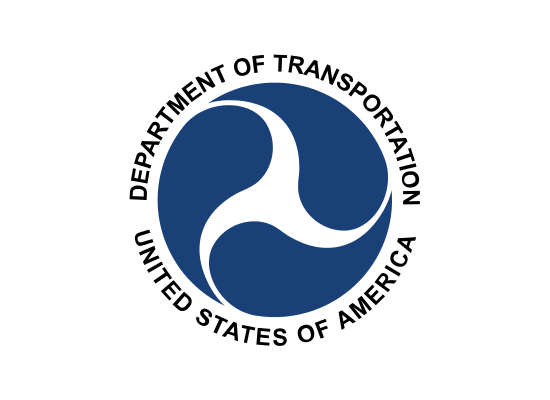May 2015, Vol 242, No. 5
Government
PHMSA Wants to Extend New Integrity Verification Program to Hazardous Liquid Pipelines

Hazardous liquid pipelines are unhappy with how the Pipeline and Hazardous Materials Safety Administration (PHMSA) wants to implement a provision of the 2011 pipeline safety law requiring companies to go back and test old steel pipelines for integrity.
Section 23 of the Pipeline Safety, Regulatory Certainty, and Job Creation Act of 2011 requires DOT to issue regulations for testing of previously untested natural gas transmission lines located in high-consequence areas and operating at a pressure greater than 30% of specified minimum yield strength.
The Act set a deadline of July 3, 2013 by which DOT was to issue rules. PHMSA is supposed to publish a final rule this year for natural gas pipelines; but has been talking with oil pipelines about extending any new MAOP requirements to their facilities, though the 2011 law makes no mention of hazardous liquid pipelines. PHMSA conducted a briefing for the oil pipelines in December, according to Andrew Black, president of the Association of Oil Pipe Lines (AOPL), and asked for comments on a draft document that was presented. The industry’s comments, recently submitted, pointed out several criticisms of that draft.
PHMSA is much further along on creating what it calls an “Integrity Verification Process” for natural gas pipelines, which have had their own criticisms. The IVP rule, if and when it is finalized and applied to gas and liquid pipeline operations, is meant to prevent accidents such as the explosion in San Bruno, CA in 2010 which was caused by the rupture of an old pipe put in the ground in 1956. In their comments, the American Petroleum Institute and AOPL argue that the 2011 law doesn’t give PHMSA the authority to enact a hazardous liquids (HL) IVP for oil pipelines, and even if it did, hazardous liquids pipelines are already doing most of what PHMSA wants them to do. After enumerating current safety measures already taken, the two associations state: “Given the described efforts, API and AOPL urge PHMSA to consider whether its broad proposal, which includes widespread spike hydrostatic pressure testing, metallurgical testing of cutouts, and other suggested verification methods, is ‘technically feasible, reasonable, cost effective, and practicable.'”
PHMSA Relents on Odorization and Inspection Definitions
The Pipeline and Hazardous Materials Safety Administration (PHMSA) backed away from a couple of pipeline regulatory changes it had proposed in 2011 which pipeline companies had opposed. Other changes, some of them minor, a few major, will be made. PHMSA made the announcement of the final changes on March 11 when it published the final rule called Pipeline Safety: Miscellaneous Changes toPipeline Safety Regulations. That final rule was noteworthy partly because of what was not in it: a proposal to clarify when a pipeline has to odorize a lateral line whose length is 50% in a Class 1 or Class 2 location. PHMSA regulations require operators to odorize combustible gas in a transmission line in Class 3 or Class 4 locations “so that at a concentration in air of one-fifth of the lower explosive limit, the gas is readily detectable by a person with a normal sense of smell.”
Laterals in Class 1 and 2 are exempt if they meet the 50% of length or less test. There has been some confusion as to how that measurement needs to be made in Class 1 and 2 locations. PHMSA proposed the lateral be measured between the distribution center and the first upstream connection to the transmission line.
The Interstate Natural Gas Association of America (INGAA) complained after the proposed rule surfaced that “for common pipeline configurations, the proposed amendment’s apparent distinction between lateral lines and transmission lines would cause parts of lines to become subject to additional safety requirements, i.e., odorization, not because they changed function; not because of changes in the risk to public safety; but solely because branch lines are tapped into them.
“The proposed amendment contradicts established industry practice without any evidence of a resulting safety benefit (and certainly with no evidence showing that the resulting safety benefit justifies the amendment’s cost).” At a meeting in 2012, PHMSA’s Technical Pipeline Safety Standards Committee agreed with the definitional confusion expressed by INGAA, the Texas Oil and Gas Association, API, TransCanada and others. It recommended the agency not go forward with the new lateral definition to be used in deciding on whether to odorize. PHMSA was swayed, and dropped the proposal from the final rule, while reserving its right to re-evaluate the proposal and consider it again in a future rulemaking action.
PHMSA also backed off some potential changes which would have restricted the types of personnel who could inspect pipeline construction. Originally, PHMSA wanted to prohibit inspection by anyone who participated in the pipeline’s construction. The proposal was based, in part, on a petition from the National Association of Pipeline Safety Representatives (NAPSR).
This was the most controversial proposal of the 17 that the agency initially proposed. Many companies argued that this could be interpreted to prohibit anyone at a construction company from inspecting a pipeline, whether they handled the pipe or not. INGAA wanted the language of the provision to be changed so that an employee of the pipeline who was qualified to do so could inspect the construction work as long as he or she was not involved in the construction itself. It opposed having to hire an independent, outside inspector, in part because there was no evidence presented that intra-company inspection had led to construction problems.
The final rule states: “Any operator personnel used to perform the inspection must be trained and qualified in the phase of construction to be inspected. An operator must not use operator personnel to perform a required inspection if the operator personnel performed the construction task requiring inspection. Nothing in this section prohibits the operator from inspecting construction tasks with operator personnel who are involved in other construction tasks.”





Comments